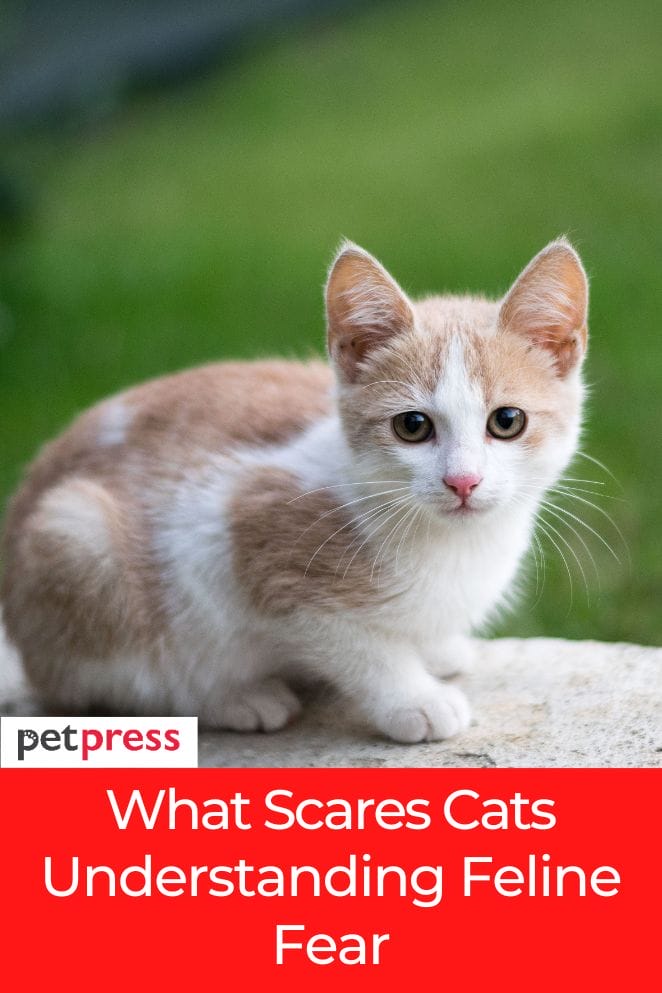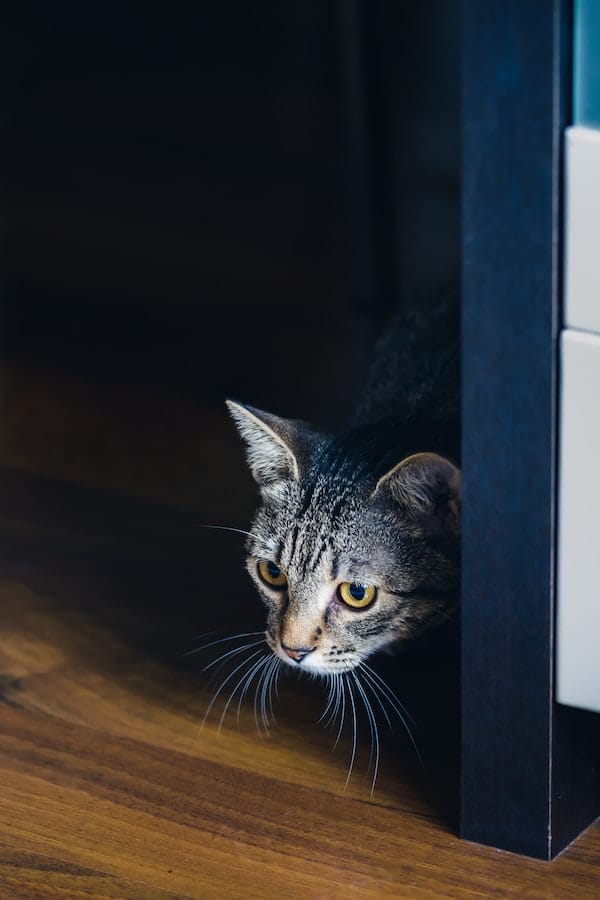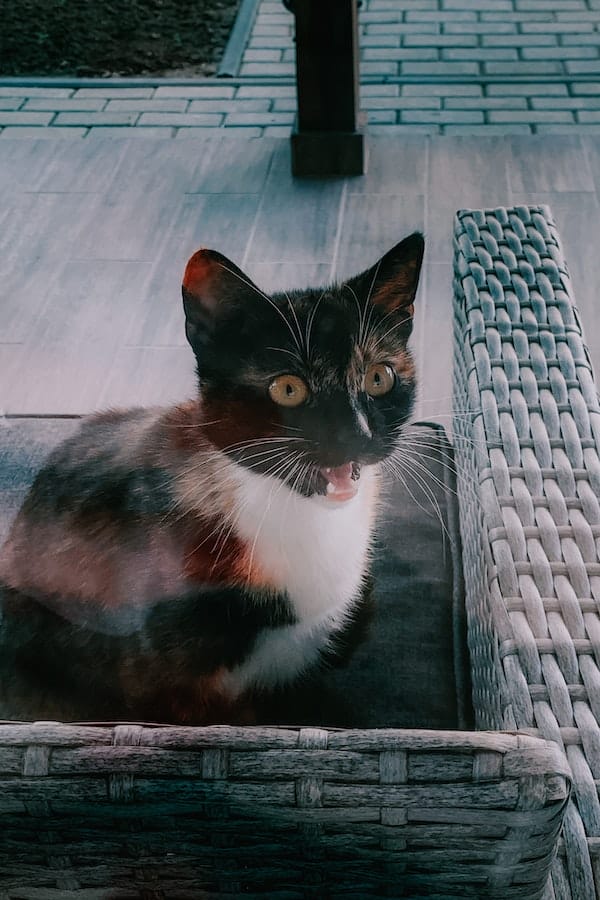
Cats present a captivating and enigmatic allure, celebrated for their independence and enigmatic behaviors.
Although they may exude confidence and composure, even the most courageous feline can undergo bouts of trepidation and unease.
Grasping the essence of what evokes fear in cats becomes imperative for every feline owner, as it directly impacts their beloved companion’s well-being and contentment.
Within this discourse, we shall plunge into the recurrent catalysts for feline fears, discern the manifestations of fear in cats, and unravel methods to assist a perturbed cat in triumphing over its inner anxieties.
Understanding Feline Fear
Fear is a natural and instinctive response to perceived threats in the environment.
In the wild, fear helps cats avoid dangerous situations and predators.
Domesticated cats retain this survival instinct, and various stimuli can trigger fear responses in them.
As responsible pet owners, it is crucial to identify these triggers and provide a safe and supportive environment for our feline friends.
Common Triggers for Cat Fears

Every cat is unique and will respond differently to certain stimuli, but there are some common triggers for cat fears. These include:
Loud noises
Cats’ keen auditory faculties render them susceptible to startling abrupt loud noises, encompassing thunderstorms, fireworks, and clamorous machinery.
Such sounds act as catalysts for anxiety, culminating in a circumspect and apprehensive demeanor.
Unfamiliar environments
Cats thrive on predictability and routine, thereby any disruptions to their accustomed environs induce trepidation and anxiety.
Relocations to novel abodes or even minor rearrangements may invoke stress within our feline acquaintances.
Strangers and intruders
Cats innately embody territorial traits, hence encounters with unfamiliar beings or animals within their domain prompt unease.
The presence of strangers or intrusive pets engenders fear responses within our feline confidants.
Handling and restraining
It bears noting that not all cats relish being restrained or held.
Mishandling or excessive restraint engenders sensations of entrapment and unease, thus culminating in fear and discomfort.
Other pets
Interactions with other pets can be a source of fear for cats, especially when encountering aggressive or dominant animals.
Social dynamics among our furry companions can be intricate, and conflicts can easily unsettle and scare some cats.
Signs of Fear in Cats
Recognizing the signs of fear in cats is crucial for early intervention. Common indicators of fear include:
- Hiding or seeking refuge in inaccessible places
- Dilated pupils
- Flattened ears
- Tail tucked between legs
- Hissing or growling
- Excessive grooming or licking
- Loss of appetite
- Avoiding eye contact
- Trembling or shaking

How to Help Your Scared Cat
Fear can be a distressing experience for cats. Here are some useful tips to help your scared cat and promote their well-being:
Create a safe environment
Your cat deserves a tranquil refuge where it can find solace during times of fear or overwhelm.
Designate a cozy room with familiar bedding and toys, thoughtfully away from noisy or bustling areas, to offer your feline companion the peace and security it craves.
Gradual exposure
Introducing new stimuli or changes to your cat’s life requires patience.
Whether it’s a new family member or a different environment, give your feline friend the time it needs to acclimate at its own comfortable pace.
Use positive reinforcement
When your cat exhibits confident or calm behavior, show your appreciation with treats, praise, or affection.
Positive reinforcement is a wonderful way to boost their confidence and minimize fear responses.
Consult with a veterinarian
In the event of severe or non-abating fear, it becomes imperative to consult with a veterinarian.
Their expertise enables them to discern your cat’s conduct and general health, thereby ascertaining whether underlying medical factors contribute to their fear.
Always prioritizing your cherished companion’s well-being.
Be patient and understanding
Engaging with a distressed cat necessitates the exercise of patience and empathy.
Elude subjecting your furry compatriot to situations that breed fear, and instead grant them the personal space requisite for safety.
Reminisce that comprehension and compassion enact profound impacts in aiding your cat in conquering its fears.
The Role of Socialization
In the context of their fear response, early-stage socialization represents an all-encompassing facet.
Kittens exposed to diverse individuals, animals, and environments during this critical juncture assume a heightened likelihood of maturing into well-adjusted and minimally fearful adults.
Embracing the endeavor to socialize with your feline acquaintance wields positive and enduring ramifications upon their overall well-being and comportment.

Overcoming Feline Phobias
For myriad cats, surmounting their fears becomes an achievable feat through the amalgamation of time, patience, and a methodical approach.
As affectionate pet owners, the provision of an environment rife with solace and support facilitates our feline acquaintances in confronting their fears.
Notwithstanding, in the case of severe phobias, procuring the aid of a proficient behavior specialist manifests as transformative in empowering our adored cats to thrive and embrace comfort within their surroundings.
Conclusion
The crux of fostering a felicitous and secure setting for our cats finds embodiment in comprehending their fears and anxieties.
By discerning commonplace triggers and adopting positive reinforcement practices, we bolster our timorous feline companions with the resolve to surmount trepidation.
The impetus of patience, empathy, and attunement to their needs persists as quintessential, engendering a life unencumbered by stress for our cherished feline friends.
Through mutual solidarity and love, we afford them the support requisite to flourish and savor the pinnacle of existence.
FAQs
Yes, cats can develop fears due to traumatic experiences, changes in their environment, or lack of socialization.
Create a safe and comfortable space for your cat to retreat to during loud noises, and provide calming aids, such as pheromone diffusers or soothing music.
Yes, hiding is a natural coping mechanism for cats when they feel frightened or threatened.
No, punishment can exacerbate fear and anxiety. Instead, use positive reinforcement to encourage confident behavior.
There may be a genetic component to fearfulness in cats, but early socialization can mitigate its impact.


GIPHY App Key not set. Please check settings